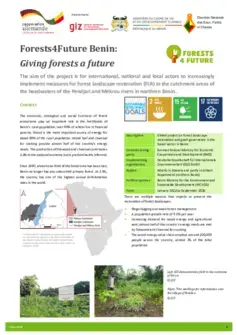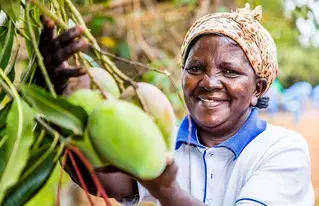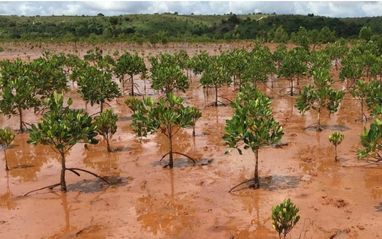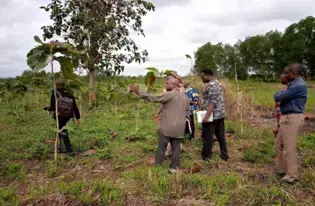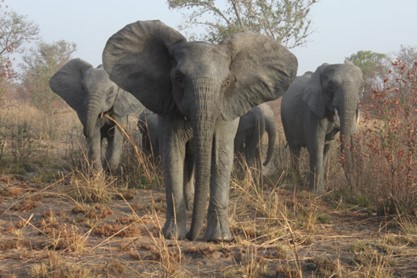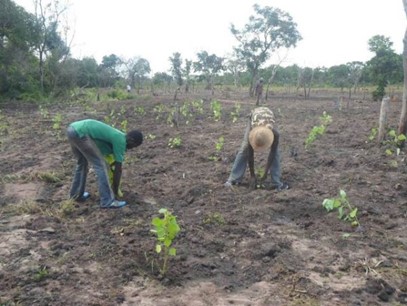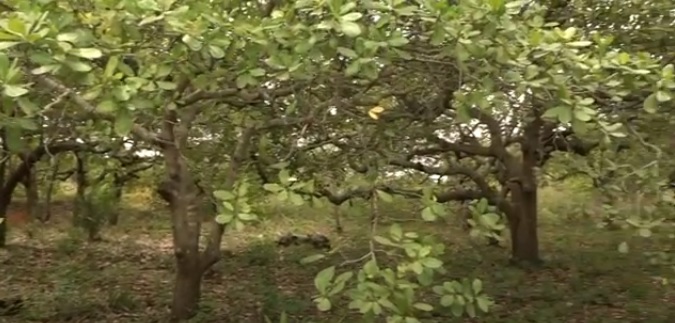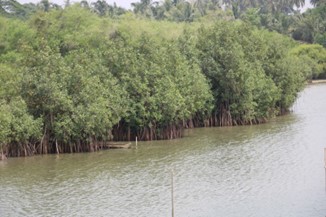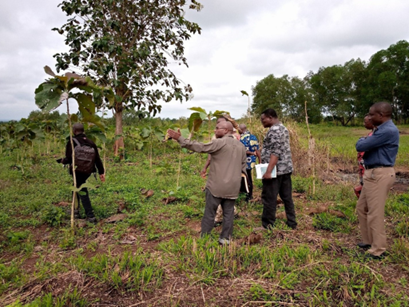Benin
May 2023
Latest Updates of Benin
Projects in Benin
Projects in Benin
Our Approach
Agroforestry
Agroforestry as a practice of mixing trees with crops, the idea may also surprise and make more than one farmer jump, but it is the essence of agroforestry: planting rows of walnut trees in a field of cereals, growing vegetables under tree cover, maintaining shrubby hedges regularly spaced in a field, transforming a vegetable garden into a forest garden, surrounding fields with hedges to form a bocage, grazing animals in a meadow. It is sometimes called “agroforestry park” or “evergreen agriculture”, and the trees there have multiple uses: wood, food, medicine, fiber, fodder, resin, latex, tannin, etc. We use the leaves, the wood, the fruits, but also the roots, the branches and the flowers.Preservation of the Parks
In Benin, around the parks, the associations support the local populations in the development of arboreal product sectors. By using permaculture and agroforestry as agricultural models, they help to manage resources sustainably, combat desertification and preserve park biodiversity. Here are the main activities:
• Develop sustainable agricultural techniques (agroforestry and permaculture),
• Develop economic sectors of tree products with high profitability;
• Sensitize and involve local populations in the protection of their environment;
• Improve food security
Restoration of degraded, denuded and abandoned lands
The main measure to restore degraded lands will consist in reforesting them or protecting them in order to make them islands of urban or peri-urban communal secondary forests. These areas could also be favored areas within the framework of actions aimed at promoting the establishment of private plantations within the framework of the promotion of the forest economy. The implementation of these measures and their sustainability would require strengthening the institutional and legal framework for the governance of urban or peri-urban forests as well as protected areas in the private, municipal or community domain. Some feasibility studies are currently underway at the level of the Beninese Agency for the Environment (ABE) with a view to setting up a restoration plan for these lands, particularly in the quarrying areas.
Replenishment and improved management of existing plantations
In Benin, the exploitation and maintenance of the forest must be carried out with the involvement of the population. Logging must comply with the conditions set out in the management plan drawn up in collaboration with the Forestry Administration. By populations, we mean all the villages dependent on the forest resources in question. They actively participate in the search for opportunities for forest production, the definition of authorizations and prohibitions, and the distribution of roles and responsibilities in terms of supervising the proper execution of activities. Two types of forest management plans are drawn up and approved by the Forestry Administration: for the classified domain and for the protected domain. As indicated in the Forest Code, in classified forests, any land use is strictly prohibited unless authorized by a forest or environmental management plan.
Promotion of alternative sources of livelihoods and alternative energies
In the energy sector, efforts will be made with the support of partners to promote alternative and income-generating activities by capitalizing especially on the achievements and results of actions carried out within the framework of the projects. These include, for example, the Program for the Management of Forests and Riparian Land Additional Financing (PGFTR-FA), the Support Project for Entente Parks (PAPE) and the Support Project for the Management of Protected Areas (PAGAP) which support the development of income-generating activities around classified forests for the first and national parks for the other two. Ongoing policy reforms in the energy sector also aim to facilitate the access of urban households to butane gas cooking equipment as an alternative to the use of coal, particularly in urban areas.
Promotion of the forest economy
In Benin, the contribution of commercial forests and private plantations is considerably low and represents less than 5% of the total forest area at the national level. The main measure to reverse this trend is to promote the forest economy through the establishment of a set of incentive measures to facilitate private investment in the creation of plantations and private or commercial forests to meet the different needs. wood populations and other wood products. Thus, the ambition is to cover at least 40% of the national demand for wood energy and timber or service by private and commercial plantations and forests by 2030, with the vision of reaching 70 % in 2050.
Development of fruit tree cultivation
In the central region hotspots, the focus will be on promoting cashew trees and short-cycle shea plantations as a strategy to restore degraded lands. Important actions are already underway with the support of UNDP and GEF in the context of the cashew sector, and will be expanded and diversified with a view to achieving LDN in Benin. In the semi-arid regions in the North where the livelihoods of the populations are seriously threatened by desertification and drought, the reorientation of the agricultural policy could relate to the promotion of the sectors of certain ligneous species of the semi-arid regions with high added value for export but also for the local economy such as gum arabic and date palm.
Protection and restoration of mangroves and other wetlands
During the period 2000-2010, i.e. in 13 years, the extent of watercourses and wetlands decreased by 11%, with also a rapid degradation of the vegetation cover resulting in a drop in primary productivity. To reverse this trend, emphasis has been placed on sanitation and the sustainable management of household solid waste, which is the main cause of congestion and degradation of wetlands. To achieve this, ongoing initiatives and efforts under the “Green Cities” initiative will be strengthened and scaled up.
Resource mobilization
At the national level, the Government intends to strengthen the framework for public investment and the mobilization of domestic resources for the restoration of forest landscapes and degraded ecosystems through the National Forest Development Fund (FNDF), the National Fund for the Environment and Climate (FNEC) and the Municipal Development Support Fund (FADeC), and specifically "FADeC Agriculture". The polluter-pays principle, which is the main resource mobilization mechanism for these national instruments, will be generalized and applied to all economic sectors. Apart from efforts to mobilize domestic resources, the Government intends to strengthen Benin's capacity to mobilize external resources, in particular innovative climate financing such as the GEF, the GCF, the Adaptation Fund, the NDT Fund, the for Climate Investment (CIF) as well as the various funds set up by regional banks and institutions such as the African Development Bank (ADB), the West African Development Bank (BOAD), the West African Savanes Foundation (FSOA ), etc.

Steps to Success
Leverage opportunity
Achieving Land Degradation Neutrality in Benin is fundamentally based on the opportunities that are offered today and which it must seize with serenity. These opportunities are of several orders. In the process of defining LDN targets and measures, Benin through the NDT Working Group which includes representatives of Ministries and structures involved in environmental issues in general and especially soil, water and vegetation components, in terms
actions or research, has made progress characterized by:
- Open manifestation of Benin's commitments and political efforts for Sustainable Land Management at the highest level;
- The integration of Sustainable Land Management measures in the Strategic Plan for the Development of the Agricultural Sector (PSDSA) and the National Agricultural Investment Plan (PNIA);
- Communication and exchanges on the establishment or revitalization of internal structures for mobilizing resources for the environment, in particular the National Fund for the Environment and Climate, the National Fund for Agricultural Development, the National Development Fund Forestier (FNDF), the Municipal Development Support Fund (FADeC), and specifically "FADeC Agriculture.
Stakeholder involvement
Through the Ministry of Living Environment and Sustainable Development, the question of Neutrality in terms of Land Degradation comes up regularly in exchanges between the executives of the Technical Departments and the General Directorates. From now on, Benin is committed to achieving the "Zero Degradation" objective by 2030. In this dynamic, all technical and financial partners are associated and invited to make more effort in the orientation of actions aimed at the preservation and land restoration, preservation and restoration of forests. Texts and regulations are now considered to discourage bad land practices in Benin. Land Degradation Neutrality is a process in which the Government of Benin finds a major interest not only to ensure consistency between sectoral policies, but also to strengthen synergies in the implementation of international and regional commitments made by Benin in matters of environmental protection and sustainable development.
The NDT working group is made up of nineteen (19) members from the Ministry of Agriculture, Livestock and Fisheries (MAEP): Directorate of Planning and Forecasting (DPP) and National Institute of Research Agriculture of Benin (INRAB); From the Ministry of Living Environment and Sustainable Development: General Directorate for the Environment and Climate (DGEC), General Directorate for Water, Forests and Hunting (DGEFC), National Center for Remote Sensing and Ecological Monitoring (CENATEL), National Fund for Environment and Climate (FNEC), Focal Point UNCCD BENIN; From the Ministry of Planning and Development: Sustainable Development Goal Focal Point; From the Ministry of Mines, Water and Energy: General Directorate for Water; From the German Cooperation; From the United Nations System: United Nations Development Program (UNDP); From the private sector and local communities: Association for the Development of Municipalities of Borgou (ADECOB), Environmental Protection Unit, National Association of Municipalities of Benin (ANCB); and the University and research laboratory.
A coordination mechanism/platform
In Benin, the Minister of the Living Environment and Sustainable Development set up an NDT Working Group which examined the different sources of data available for the definition of the baseline and for the proper execution of the activities and projects identified. At the central administration level, the issues of Land Degradation Neutrality will now be taken into account in all the policy development and implementation process in the Ministries and Directorates concerned. The Ministry of Planning and Development will be responsible for coordinating the consideration of Neutrality in terms of Land Degradation in all policies. At the level of the local administration, the local planning documents, including in particular the Communal Development Plan, the Master Plan for the Development of the Commune (SDAC), the Economic and Social Development Plan (PDES), the urban planning in agglomerated areas, and urban development and subdivision plans will be rigorously followed so that LDN is integrated. At the international level, the Government has also undertaken several actions.
Capacity Building
The actions to be implemented in this context will consist in building the capacities of national structures and human resources for sustainable development in order to fight against land degradation. The Government has also strengthened the agricultural research structures to support efforts to modernize and sustainably intensify agricultural production through the strengthening and large-scale dissemination of green technologies. These measures will be accompanied by effective policies to improve producers' access to fertilizers and the development of irrigated agriculture with a view to combating mining-based agriculture, which is a factor in the impoverishment and degradation of agricultural land.
Apart from efforts to mobilize domestic resources, the Government intends to strengthen Benin's capacity to mobilize external resources, in particular innovative climate financing such as the GEF, the GCF, the Adaptation Fund, the NDT Fund, the for Climate Investment (CIF) as well as the various funds set up by regional banks and institutions such as the African Development Bank (ADB), the West African Development Bank (BOAD), the West African Savanes Foundation (FSOA ), etc.
Partnership
A partnership initiative implemented by the Secretariat and the UNCCD Global Mechanism with the contribution of the following partners: France, Germany, Luxembourg, Republic of Korea, Spain, Trinidad and Tobago, Turkey, the European Space Agency, the Food and Agriculture Organization of the United Nations, Global Environment Facility, ISRIC Global Soil Information System, International Union for Conservation of Nature, Joint Center European Commission Research Fellowship, Soil Leadership Academy, United Nations Development Programme, United Nations Environment Program and World Resources Institute.
Key Milestones
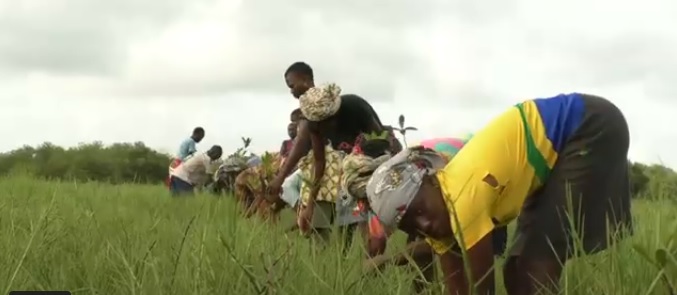
- SWOT analysis of the legal and institutional framework on sustainable land management in Benin
- Analysis of land degradation trends and factors in Benin

- Targets and measures to achieve LDN in Benin
- Policy brief on LDN targets and measures
- National Leverage Plan

Our Vision
Benin's adherence to the LDN National Target Definition Program resulted in the introduction of a communication to the Council of Ministers for government leadership and the integration of SLM into the priorities of the state. Benin is resolutely committed to the LDN vision through the Ministry of Living Environment and Sustainable Development, which has mobilized several ministries and structures concerned around the theme. Benin's vision is to restore 100% of degraded land and desertification by 2030.



Benin: Bilan restauration des écosystèmes mangrove bouche du roy - ONG Eco-Benin
Resources
in Benin
